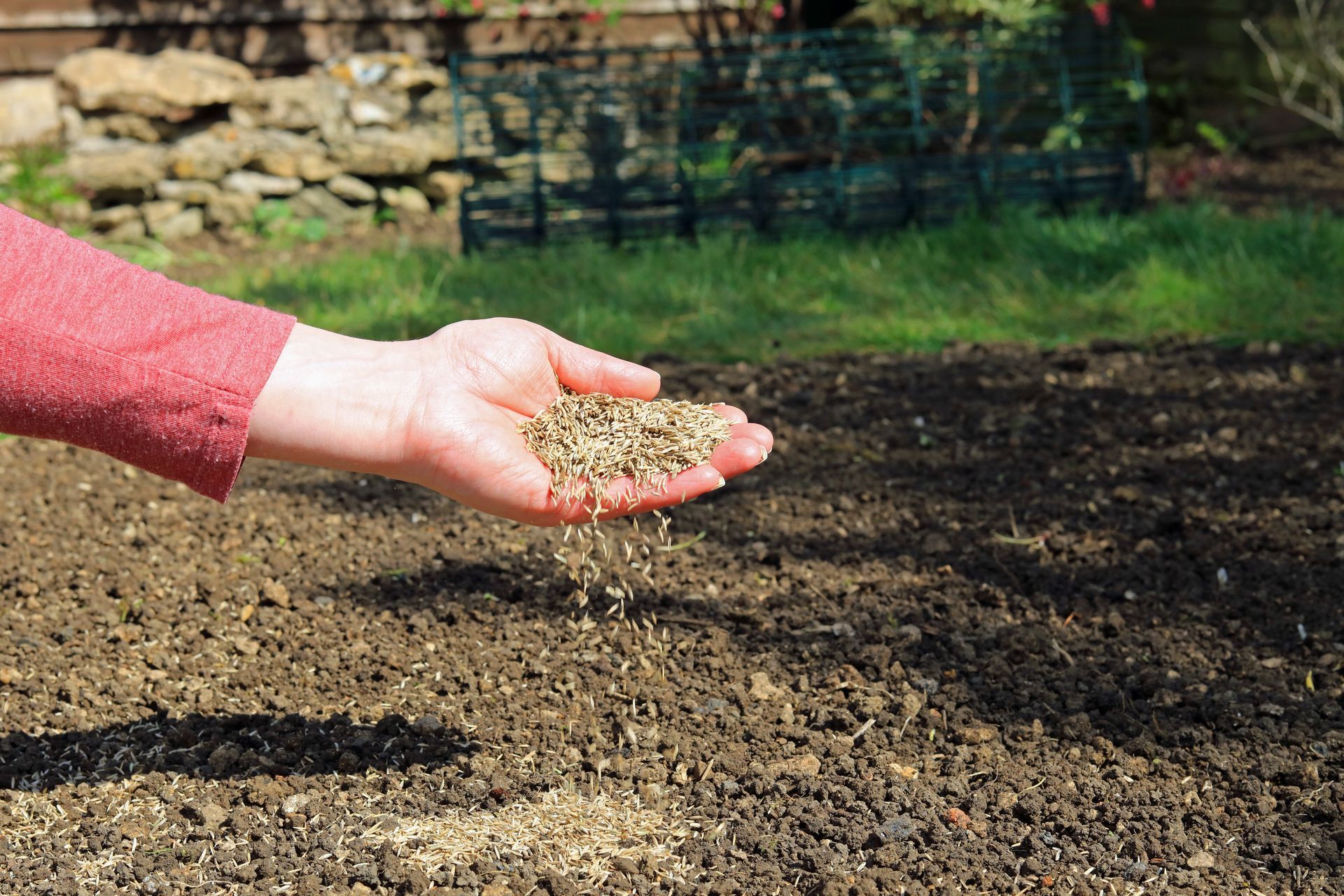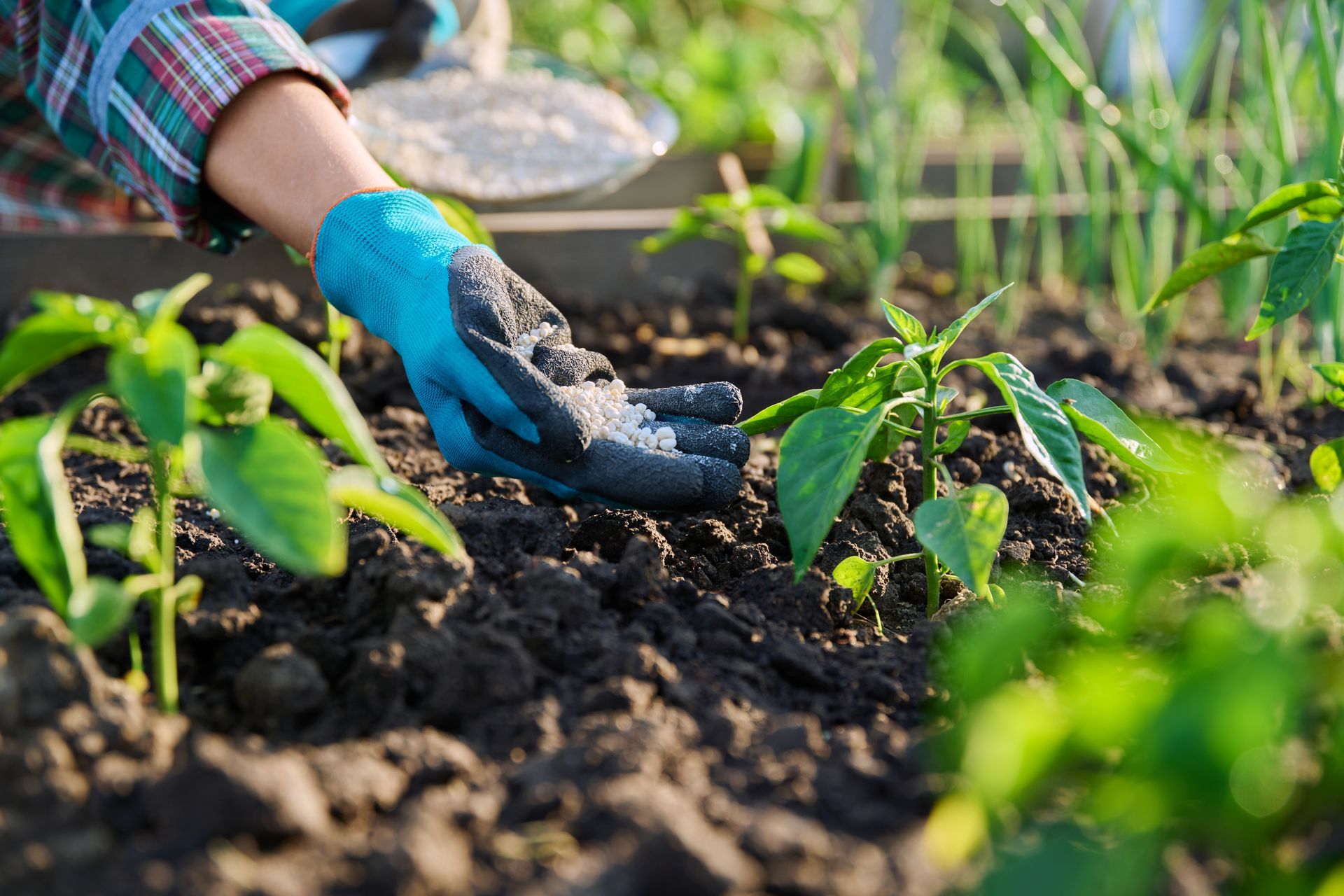November 28, 2023
Fall Leaf Removal: A Crucial Step for a Healthy Lawn
Raise your hand if you’ve ever dived into a huge pile of fall leaves. It may be a favorite for kids and pets, but this iconic moment is essential for another reason—clearing the leaves from your lawn ahead of winter. Leaf removal is a crucial step in fall lawn care for maintaining a healthy yard during cold temperatures, freezes, and snowfalls in Southeast Michigan. But before you rake up all the leaves and put them into bags for garbage pickup, there are a few things to consider. For example, should you remove all of the leaves? Grab your garden gloves and a rake, and let’s get into it.
Why Remove Fall Leaves?
In the fall, trees prepare for dormancy by shedding their leaves. While these fallen leaves add orange, red, and yellow hues to the autumn scenery, their accumulation on your lawn can harm your lawn. A thick layer of leaves can deprive your grass and soil of essential sunlight and air, especially as the days get shorter. The lack of vital elements prevents grass from producing food and energy through photosynthesis. This weakens the grass and roots, making your lawn susceptible to disease and pests. Fall leaf removal is even more important because a layer of leaves can trap moisture and lead to snow mold and other fungal diseases.
The Best Way To Remove Leaves
Leaf removal is probably one of the more tedious aspects of yard work, but it doesn’t have to be back-breaking. Here are several ways we recommend for removing fall leaves from your lawn:
- Manual Leaf Removal - This traditional method of removing leaves is done by raking the leaves into piles throughout the yard. It is time-consuming, but it’s effective for small to mid-sized yards. In fact, frequent light raking throughout the fall season can help keep soil from compacting and promote healthier grass growth. Raking can also help break up thatch, a combination of grass clippings and other organic matter on top of the grass.
- Leaf Blowing - By now, we’re all familiar with the sounds of a leaf blower, as it’s the top choice for landscapers and homeowners with larger yards. Using a high-velocity air stream, leaf blowers quickly gather leaves into piles. Not only can sound and smell be off-putting, but leaf blowing can destroy the healthy fungi and microbiomes that enrich your soil, and it disperses dust and debris, as well as the leaves.
- Mulching - Mulching, or grasscycling, is one of the most sustainable and eco-friendly ways to tackle fall leaf removal. The process involves finely chopping leaves and leaving them on the lawn as organic matter. Mulched leaves provide several benefits, including improved soil aeration, water retention, and nutrient content. And fall is the best time to feed your lawn anyway, so it’s a win-win! Light mulching also avoids disturbing helpful species that shelter within the fallen leaves.
Tools Needed for Removing Fall Leaves
The three top tools used to remove leaves from Southeast Michigan lawns include rakes, leaf blowers, leaf mulchers, and lawn mowers. Rakes come in several sizes and styles, and each one is better for specific tasks. Lightweight rakes with flexible tines are better for general leaf removal, while heavy-duty rakes with sturdy tines are better for thicker layers of leaf removal. Leaf blowers are a power tool that comes in electric and gas-powered form. Electric leaf blowers are quieter than their gas-powered counterparts, but both are effective at leaf removal.
Leaf mulching can be done with your current lawnmower or a leaf mulcher. When using your lawn mower, set your mower at its highest setting and follow your typical mowing routine. Then, mow again in the other direction, making a criss-cross pattern. As shredded leaves decompose, they return precious nutrients to the soil. This natural fertilization helps grass develop deeper roots and become more drought-resistant. Leaf mulchers are specialized lawnmowers equipped with sharp blades that shred leaves into fine pieces. You can also bag some of the leaves and then dump them into flower beds and around
trees and shrubs to provide extra nutrients to those areas.
Trust the Fall Lawn Care Experts at Visionary Fertilization
Whether you choose to follow sustainable practices for leaf removal or blow your leaf troubles away, fall leaf removal is necessary. The goal is to protect your grass and roots during the cold winter months. The experts at Visionary Fertilization can help you develop a year-round plan for lawn care, including tree and shrub care. Contact us for a free quote, and let our team remove fall leaves and winterize your lawn.




